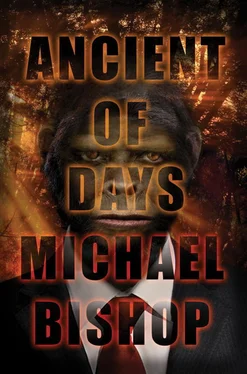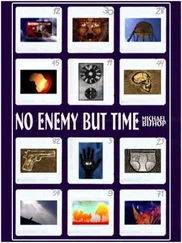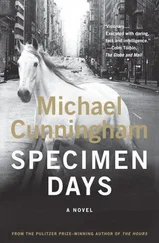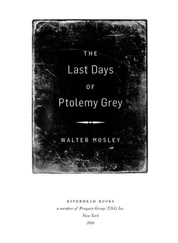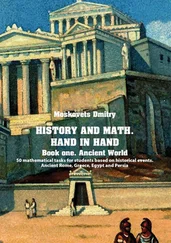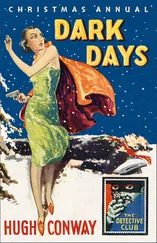Therefore, local agents interviewed the woman who had rented “Greg Burdette” his house, his most frequent fellow painters, and some of the contractors and home owners who had hired him. Their assessment was that Burdette lived quietly and frugally, never talked about his past, never shirked on a job, and tackled even the dull business of caulking a rain gutter as if it were a signal step in a fiscal game plan that would one day free him of the need to paint houses. Everyone who had known him, in fact, assumed that his highest purpose in life was to become rich. Although he never flaunted this ambition, he took care of his money, made his bids competitive without underselling himself, and insisted on payment in full before leaving the premises of any completed job. He set forth this condition at the outset of every enterprise, and his reputation as a conscientious workman—one who’d clean rain gutters, scrape away old paint, apply reliable primers, and so on—rarely failed to win his employers’ agreement.
His Achilles heel, if he had one, was an inability to work with blacks. He refused to do so. Blacks never appeared on any of the painting crews he hired out to or put together himself. Two or three times, at least, he had passed up jobs because a contractor had wanted him to share the work with a black painter. Similarly, he painted the home of a black only if he could work with a crew consisting solely of whites. This seldom happened. Oddly, though, his refusal to work with blacks never led him to badmouth them. Stereotypical comments about intelligence levels, food stamps, welfare Cadillacs, and illegitimate babies never passed his lips. He shut down on the subject of blacks altogether, visibly holding himself in, as if struggling to obey the homely injunction, “ If you can’t say anything good about someone, don’t say ,” etc., but the suppressed hostility of this effort tightened his jaw and set his eyes jitterbugging. In one way, it was funny. In another, it was frightening.
One former associate remembered that Greg strongly approved of the Fulton County DA’s crusade against pornography. Massage parlors, adult bookstores, and adult theaters disgusted him. He would cuss a blue streak with no qualm or discernible sense that some people might find such language as offensive as he found photographs of naked people. In hot weather, he worked in denim cutoffs and tennis shoes, shirtless and proud of it—but, given a context marginally interpretable as erotic, bare skin outraged him. Once, during a lunch break, he had yanked a men’s magazine from a seventeen-year-old apprentice who had held up the foldout for his approval. “This is shit you’re lookin’ at!” he had raged.
The house on I-285 yielded even more information. As Greg Burdette, Craig had been careful not to subscribe to any publications that state or federal law-enforcement agencies might classify as racist or provocatively right-wing. But he had bought them from newsstands, where possible, and had taken pains not to visit the same newsstands often enough to give their operators any real grasp of his reading habits. These were magazines devoted to firearms, post-nuclear-holocaust survival, legal redress for white “victims” of affirmative-action laws, and creationism. Along with these magazines, agents had found, stuffed in drawers, circulars announcing Klan meetings and pamphlets on many topics from ultraconservative politicians. Also, Craig had possessed a small arsenal of unregistered handguns, most with serial numbers metal-rasped or sandpapered away. A bulletin board in his bedroom displayed clippings from the Atlanta newspapers about racial conflict and crimes perpetrated by blacks. Prominent among these clippings was one recounting the acquittal of some Klansmen in a Greensboro, North Carolina, murder trial. Craig had marked every word in the headline with a red highlighter.
Also in the house: items suggesting that Nancy Teavers had lived there with him at least three months—clothing, toilet articles, mementoes of her marriage to Craig’s dead friend, E. L. In fact, the arrangement of sleeping quarters in the little house—Nancy occupying a room that Craig had once set aside as a business office—strongly suggested that they’d treated each other as brother and sister. The punk wardrobe that Nancy had worn to Sinusoid Disturbances, the GBI agents discovered not in Nancy’s bedroom but in a steamer trunk at the foot of Craig’s bed. Perhaps he had had a fetishistic fascination with such items. The clothes in Nancy’s “closet,” a cardboard chifforobe purchased from a long-defunct Forest Park dry cleaners, had about them a small-town conventionality totally at odds with the shabby glitter of the getup in the trunk. Moreover, Nancy had filled her bedroom with decorative pillows, stuffed animals, even a few dolls. The Little People doll that Craig had hung up in Abraxas beside T. P. had been Nancy’s. Her late husband had given it to her for Christmas over three years ago. An interview with Nancy’s mother revealed that, in the privacy of her mobile home in Beulah Fork, the young woman had behaved around that fabric-sculpture infant—Bonnie Laurel—as if it were a living baby. More than anything, Nancy’s mother told the GBI interviewer, her daughter had wanted to bear her own child. She and E. L. had just about decided to take the plunge when… but if you knew E. L.’s fate, those words constituted an unfortunate turn of phrase.
Craig had strangled Nancy in the little house off I-285. The Newsweek cover that had caused him to flip out, a betrayal of his every hate-handicapped concept of decency, had probably merely surprised Nancy, without leading her to believe that only the child’s murder would properly expiate and punish the parents’ flagrant sin. She had resisted Craig’s arguments to kill Paulie. Her resistance had further outraged him. He had attacked her. Signs of the struggle marked the house and her body: overturned chairs, broken dishes, a curtain pulled off its rod. The coroner’s report on Nancy mentioned not only contusions about her throat, but also deep bites on her breasts and upper arms, and her severely cracked ribs. She was small, though, and Craig had overpowered her—after their initial chase and scuffle—with ease. Afterward, he had dressed her in the orangutan outfit, which he’d rented shortly before or shortly after her murder. Her installation in the sanctuary of the Little Five Points Unaffiliated Meditation Center had then had to await the cover of darkness.
As for Tiny Paul… Is there any need to continue? The reader can imagine the details of the child’s execution far more easily than I can write them.
Late on Tuesday afternoon, the child’s body was shipped to a crematorium in Macon. On Wednesday, his ashes were returned to the Montarazes in an ornate funerary urn. They had decided together on this means of disposing of the corpse, and, upon the recovery of Tiny Paul’s ashes, they observed a private memorial service in their own home. Bilker Moody attended these rites, but Caroline Hanna and I did not because Adam had asked me to run an errand in Beulah Fork—to visit Craig’s family and to invite his mother to bury Craig beside T. P.’s ashes in a state-approved plot of my pecan grove on Paradise Farm. It was an errand I might not have accomplished without Caroline along for moral support. Morale support, to use Adam’s own coinage.
Public reaction to Tiny Paul’s murder was prolonged, sometimes thoughtful, occasionally fulsome, and always wearying. The President sent a wire, as did other prominent heads of state, including the Pope. A triumvirate of East African leaders released a joint communiqué offering the Montarazes citizenship in their countries and free transportation “home.” A. P. Blair, the Zarakali paleoanthropologist, sent a two-page handwritten letter of commiseration and belated apology, but neither RuthClaire nor Adam could deduce from his self-referential prose the specific injustice for which he was apologizing. A host of network commentators and TV evangelists delivered eulogies. Every major daily newspaper in the country ran an editorial. In Atlanta, by special gubernatorial dispensation, the flags on the capitol grounds were flown at half-mast. Even more impressive, a procession of people clad in crepe marched in triple columns through Inman park to the mournful music of drums, fifes, and bagpipes. In Beulah Fork, I closed the West Bank for the remaining five days of our work week.
Читать дальше
